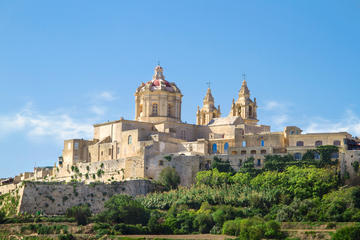Mdina
TIME : 2016/2/22 11:57:25

Mdina
The tiny walled, hilltop settlement of Mdina traces its history back 4,000 years and it was just outside the city that St Paul took refuge in a cave when he was shipwrecked on Malta in 60 AD. The town was once Malta’s capital and is crammed with glorious golden-stoned mansions built for the aristocracy in the 15th and 16th centuries. Chief among these is the grand Palazzo Falson, with a series of elegant rooms clustered around a central courtyard in typical medieval Spanish style and a charming little museum full of eccentric bygones.
Among its tangle of cobbled streets and splendid medieval architecture, Mdina’s pride and joy is massive St Paul’s Cathedral, designed by Maltese architect Lorenzo Gafa and completed in 1702 in an exuberant Baroque style similar to Valletta’s St John’s Co-Cathedral. The interior features a nave covered with marble tomb slabs of the rich and famous and the vaulted ceiling is covered with frescoes from St Paul’s life. The cathedral’s museum has a small but excellent collection that includes works by Rembrandt and Dürer.
To learn more about Mdina’s checkered history, head for the audio-visual Mdina Experience on Triq Villegaignon. The area immediately outside the ancient city walls is Rabat; visitor attractions to catch here include the Domus Romana for its fine Roman mosaic pavements and the catacombs of St Agatha, dating from the fourth century AD and whose tunnels are aglow with 16th-century frescoes.
Practical Info:
A 20-minute ride on bus routes 80 and 81 from Valletta bus station or a 10-minute drive by car, in the summer Mdina can get overrun with visitors admiring its splendid medieval architecture. Stay overnight to capture the atmosphere as it reverts back to being Malta’s ‘silent city’, steeped in tranquility and mystery. The Heritage Malta Multisite Pass can be used at the Domus Romana.
